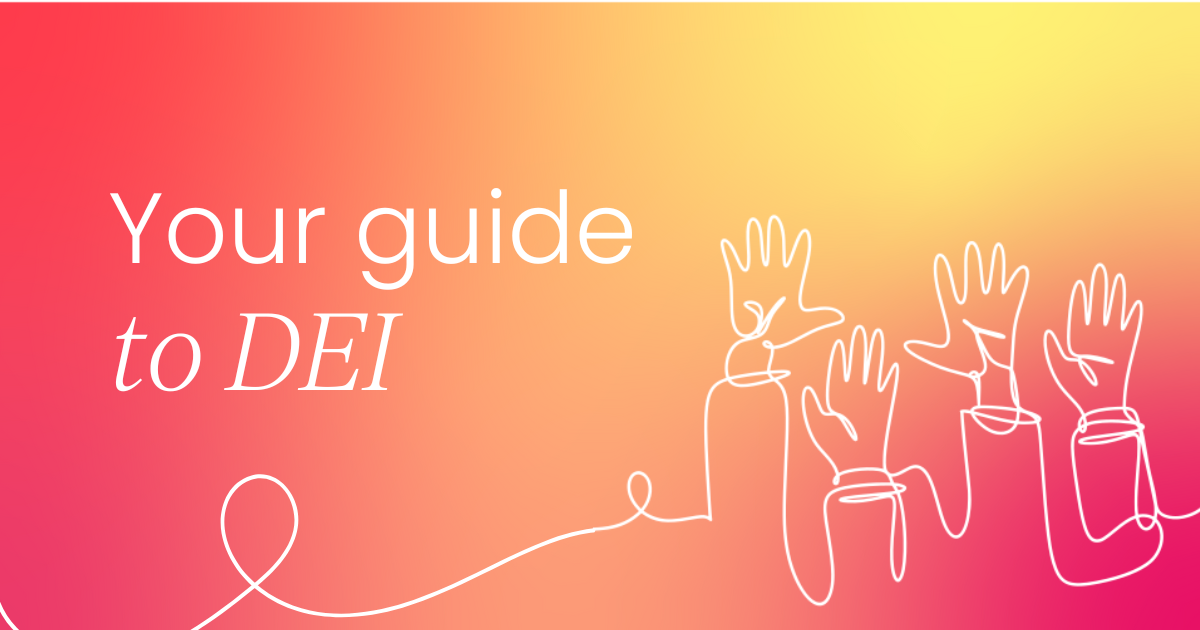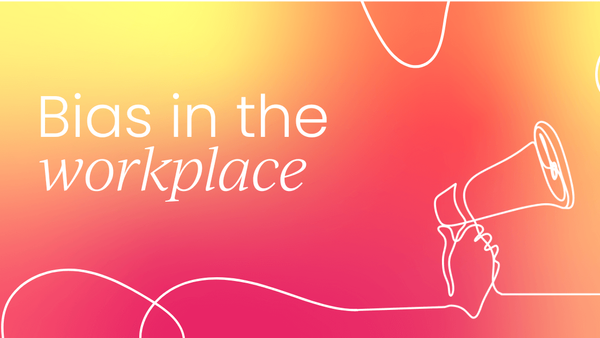Ever wondered if your leadership team might be unintentionally holding your organization back?
A recent Skillcast survey of 2,000 UK professionals dropped some eye-opening stats about unconscious bias that every forward-thinking CMO needs to hear.
The numbers are stark: nearly one-third (30%) of employees have experienced or witnessed workplace bias, with 39% pointing to senior management as the primary source.
This means that the very leaders tasked with driving innovation and culture might be the ones creating invisible barriers.
These aren't just statistics. They're real stories of talented professionals feeling marginalized, potential being stifled, and organizational cultures slowly eroding from the inside. For marketing leadership, this is both a wake-up call and an opportunity to rewrite the narrative.
Understanding unconscious bias isn't about blame – it's about creating workplaces where every team member can truly bring their full, authentic self to work. Recognizing these hidden dynamics can inspire strategies that not only mitigate bias but actively celebrate diversity as a competitive advantage.
Ready to turn these insights into action? In this article you’ll learn about:
- What implicit and unconscious biases are
- The difference between bias and prejudice
- What bias can look like in the workplace
- Why leaders should care about bias in the workplace
- Types of implicit bias
- Types of unconscious bias
- How to overcome unconscious and implicit bias in the workplace
Implicit versus unconscious bias
Think of bias as the instant gut reaction you feel about something before your mind even kicks in. Like when you meet someone new and something just feels off, but you can't exactly explain why.
Unconscious bias is like those deep-rooted assumptions you've picked up over your whole life without realizing it. It's basically your brain's autopilot – you've absorbed these ideas from your family, media, culture, and experiences, and now they just... run in the background.
Implicit bias is super similar – it's basically those snap judgments that happen so fast you don't even notice them. Think of it like a really quick mental filter that colors how you initially see someone or something.
The big difference? Not much, honestly. They're cousins in the world of unintentional prejudice. Both happen automatically, both can make you treat people differently without meaning to, and both are really hard to change because they're so deeply woven into how your brain works.
The key thing to remember is this: just because these biases exist doesn't make you a bad person. What matters is recognizing them and actively working to see people as individuals, not stereotypes.

Bias versus prejudice
Though they sound similar, there are some distinct differences between bias and prejudice.
Bias is more of an unconscious lean, while prejudice is an active, often negative belief. Bias might make you slightly uncomfortable around someone different; prejudice makes you think they're inherently less valuable.
Bias can be changed pretty easily with exposure and awareness. Prejudice? That takes way more work because it's deeply emotional and often tied to someone's core identity.
Bias in the workplace
Workplace bias is an invisible obstacle course that makes career advancement way harder for some people. Here's how it typically shows up:
Hiring stage:
- Resumes with "ethnic-sounding" names get fewer callbacks
- Unconscious preference for candidates who look/sound like current employees
- Assuming certain groups aren't a "cultural fit"

Promotion and opportunities:
- Women and minorities often overlooked for leadership roles
- Mentorship and high-visibility projects are disproportionately given to majority groups
- Performance evaluations subtly influenced by demographic stereotypes
Communication and daily interactions:
- Interrupting or talking over certain employees more frequently
- Assuming less competence from women or people of color
- Microaggressions (subtle, often unintentional comments or actions that communicate hostile, derogatory, or negative messages to marginalized groups) that make some employees feel undervalued
- Different communication standards for different groups
Compensation:
- Pay disparities that aren't based on merit
- Salary negotiation outcomes that are heavily influenced by gender and race
- Less aggressive salary increases for marginalized groups
Most of this happens without people realizing they're doing it. It's not usually about intentional discrimination, but about deeply ingrained patterns of thinking that create systemic barriers.
Why should leaders care about bias in the workplace?
There are many reasons as to why leaders should care about bias in the workplace and the first one is arguably the most important.
Ethical responsibility
As a leader, you have a responsibility to create a workplace that values and respects every individual, regardless of their background. Bias fundamentally undermines this principle by creating barriers that prevent talented employees from fully contributing and advancing based on their skills and merits.
Organizational performance
Beyond ethics, addressing workplace bias directly impacts organizational performance. Diverse teams that embrace different perspectives generate more innovative solutions and make more robust decisions. By eliminating bias, you unlock the full potential of your workforce, fostering an environment where creativity and critical thinking can flourish.
Legal and economic implications
The legal and economic implications of workplace bias are substantial. Discrimination can result in costly lawsuits, significant financial penalties, and severe reputational damage.
Moreover, organizations that fail to address bias will struggle to attract and retain top talent, as skilled professionals increasingly seek inclusive workplaces that offer genuine opportunities for growth.
Employee engagement
Employee engagement is perhaps the most immediate and tangible benefit of confronting workplace bias. When individuals feel valued and respected, and see clear pathways for advancement, their motivation, productivity, and loyalty increase dramatically. This creates a positive organizational culture that not only supports individual success but also drives collective achievement.

Types of implicit bias
Gender bias
Gender bias is about having invisible scripts about what men and women "should" be doing. Like assuming women are naturally better at caregiving, or men are inherently better at leadership roles. It's those subtle expectations that shape how we view professional capabilities.
In the survey done by Skillcast, they found that gender bias emerged as the most prevalent form of bias across all sectors in the UK, followed by ageism and racial bias.
Age bias
Age bias – or ageism – is where people are pigeonholed based on their age. Young people are "inexperienced," and older workers are "out of touch." It's those automatic assumptions that completely ignore individual capability and potential.
Racial bias
Racial bias amounts to those gut-level assumptions you make about someone's intelligence, capability, or character based on their race or ethnicity. It's having an internal soundtrack of stereotypes playing without realizing it. Think: automatically associating certain groups with specific jobs, talents, or potential.
Affinity bias
Basically, with affinity bias, you're most comfortable with people who feel like your mirror image. Same background, similar experiences, familiar vibe. It's why networking often looks like an echo chamber.
Confirmation bias
Confirmation bias is when your brain finds evidence that proves what you already believe. Heard something that confirms your existing view? You'll grab onto it like a life raft. Contradictory information? Nah, that doesn't fit the narrative.
Beauty bias
Sad but true – attractive people often get preferential treatment. Better first impressions, more opportunities, assumed to be more competent. It's like an unspoken social currency.
A survey found that when examining hiring managers' perceptions of women with different body types, only 15.6% indicated they would hire the woman with the largest body. Moreover, 21% of respondents characterized her as "lazy" and "unprofessional."
Name bias
Name bias is where your brain makes instant judgments based on someone's name. A "foreign-sounding" name might trigger unconscious assumptions about culture, competence, or belonging.
Types of unconscious bias
Halo/horn effect
Imagine you meet someone who's incredibly charming, and suddenly you assume they're great at everything. That's the halo effect. Conversely, if someone makes one mistake, the horn effect means you now see everything they do as terrible. It's like your brain decides one trait defines their entire existence.
Similarity bias
Similarity bias is basically "birds of a feather flock together" in the workplace. We naturally gravitate towards people who look like us, talk like us, or went to similar schools. It's why a lot of teams end up looking pretty homogeneous – we unconsciously hire and promote people who remind us of ourselves.
Affinity bias and similarity bias are quite similar, but not the same. Affinity bias is the tendency to favor people similar to ourselves, while similarity bias specifically refers to preferring or trusting information and people that confirm our existing beliefs or perspectives.
Attribution bias
This is where things get tricky. When you mess up, it's because of circumstances. When someone else messes up, suddenly it's about their character. A white employee being late? "Traffic was bad." A Black employee being late? "They're unprofessional." Same scenario, totally different interpretation.
Conformity bias
Ever been in a meeting where nobody wants to be the first to disagree? That's conformity bias. People start agreeing just to go along with the group, even if they privately think differently. It kills innovation and diverse thinking.
In-group favoritism
You automatically trust and root for people you perceive as "your" people. This could be based on race, gender, alma mater, department – anything that creates an "us vs. them" mentality.
Contrast effect
Imagine interviewing candidates back-to-back. One of them might be average but seem amazing compared to a weaker candidate you saw before them. The next great candidate might seem just okay because they're following a stellar interview. You're judging relative to the immediate context, not absolute merit.

How can unconscious and implicit bias be overcome in the workplace
Addressing bias requires deliberate, sustained effort. This means implementing unconscious bias training, creating transparent hiring and promotion processes, ensuring diverse leadership representation, and establishing accountability mechanisms that consistently reinforce a culture of inclusion and respect.
As an individual committed to personal growth, you can actively work on recognizing and mitigating your own unconscious biases through intentional self-reflection and learning.
Let’s get into these in a little more detail.
Be more conscious of your own biases and work against them
Understanding and addressing personal biases starts with self-awareness. Consider keeping a bias journal to reflect on moments when you notice potentially prejudiced thoughts or reactions.
This habit allows you to unpack the root causes – are these perceptions grounded in real experiences, or do they stem from ingrained stereotypes?
Tools like the Harvard Implicit Association Test can also offer insight, helping you uncover unconscious preferences and challenge the assumptions they reveal.

Do your own research for diverse perspectives and experiences
Growth often begins with exposure to new ideas. Actively seek out diverse perspectives by exploring media created by people from a variety of backgrounds, cultures, and life experiences.
Reading books, watching documentaries, and following thought leaders online can challenge your worldview in meaningful ways.
To deepen your understanding, participate in cultural events, workshops, and seminars that immerse you in experiences and perspectives different from your own.
Practice active listening and empathy
Building meaningful connections requires more than listening – it requires understanding. In your workplace, approach conversations with an open mind, especially when colleagues share their personal experiences.
Instead of reacting defensively, focus on asking thoughtful questions that reflect genuine curiosity. Acknowledge that unconscious biases may shape your initial reactions, and commit to seeing the world through the lens of others’ lived experiences.
Develop a personal learning plan for bias reduction
To make lasting change, create a structured plan for reducing bias in your own life. Set specific goals to deepen your understanding of diversity, equity, and inclusion. For instance, you might aim to read books by authors from underrepresented groups or regularly attend workshops on cultural competence.
Engaging in conversations with colleagues from different backgrounds can also provide valuable insights into the barriers they face and how you can contribute to a more inclusive environment. I
f you’re going to do this, though, you need to make sure it’s in the correct setting, with their consent to talk about such sensitive matters. Not everyone is going to be comfortable with these kinds of conversations.
Become accountable for your actions
Growth is easier when you’re not navigating it alone. Partner with a trusted mentor or accountability buddy who can help you reflect on your progress, question your assumptions, and offer constructive feedback.
Viewing this feedback as an opportunity to improve rather than a criticism can foster a more positive and open mindset.
Unconscious bias training for your team
Creating a more inclusive workplace requires moving beyond surface-level solutions. Design unconscious bias training that focuses on interactive, hands-on learning rather than passive lectures.
For example, incorporate role-playing exercises, real-world case studies, and reflective discussions to help employees uncover how bias may influence their decisions. Ensuring these sessions are ongoing and tied to measurable outcomes can create a lasting impact for both individuals and the organization.
Also, make sure you're using professional coaches or trainers if possible because they bring expertise in designing transformative learning experiences.
Professional facilitators understand how to create psychologically safe environments, use evidence-based techniques to surface unconscious biases, and guide participants through complex emotional and cognitive challenges.
They can help your team develop practical strategies for recognizing and mitigating bias, ensuring the training goes beyond awareness to creating real behavioral change.
Transparent hiring and promotion processes
Fairness begins with transparency. When managing hiring or promotions, adopt practices like blind resume screening to focus solely on candidates’ qualifications. Structured interviews with standardized questions can also reduce the risk of unconscious bias.
Including diverse panel members in the hiring process ensures multiple perspectives are considered. By regularly analyzing hiring and promotion data, you can identify patterns of bias and take corrective action to ensure equal opportunities.
Diverse leadership representation
Representation at the top matters, and it requires intentional effort. As a leader, invest in mentorship and sponsorship programs that support the career growth of underrepresented employees.
Leadership development initiatives should focus not only on skill-building but also on addressing systemic barriers that hinder progress.
Regular pay equity reviews can ensure fair compensation across all demographics, while setting measurable diversity goals for leadership roles reinforces your commitment to meaningful change.

Final thoughts
Eliminating workplace bias begins with a personal commitment to ongoing learning and growth.
Embrace curiosity, remain open to feedback, and view each moment of uncertainty as an opportunity for meaningful understanding.
True progress emerges from the courage to ask questions, acknowledge limitations, and actively work towards creating a more inclusive environment.



 Follow us on LinkedIn
Follow us on LinkedIn









